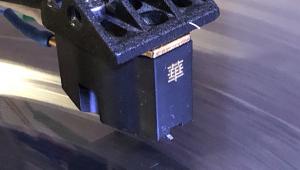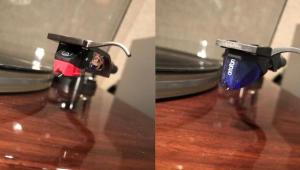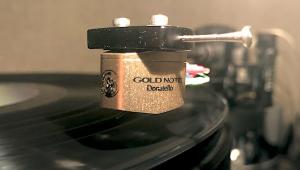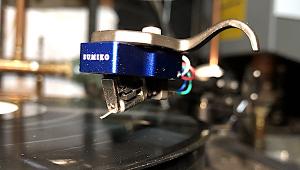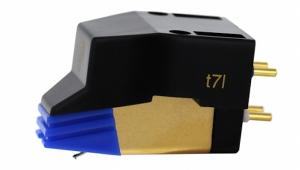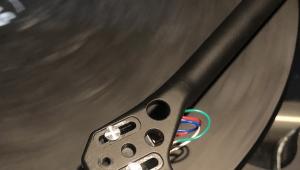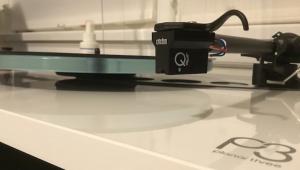Lyra Skala moving-coil phono cartridge
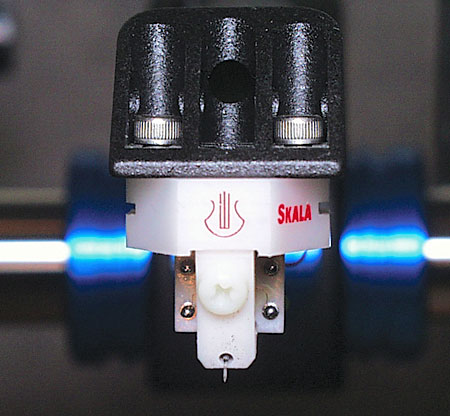
If you think otherwise, consider "In Tuition Game, Popularity Rises with Price," a December 12, 2006 New York Times article about how good but lower-priced schools actually lose applicants to lesser, more expensive schools, and so are forced to raise their tuition fees in order to attract students. Then, to make themselves more affordable and offset the tuition increases, most of these schools have had to increase student aid, and add such premiums as free laptop computers. But according to the Times story, raising the tuition and the available amount of student aid considerably increased the number of applicants.
Is there any difference between what those schools have done and what cartridge makers do when they couple high-priced phono cartridges with generous trade-ins on nearly worthless old cartridges? Not really, but don't blame the manufacturers or retailers. It's just the way the marketplace works.
So a few years ago, when a reader wrote to me saying that he had a Lyra Helikon that he was perfectly happy with, but that he wanted to "move up" to a $3000 cartridge and wondered if I had any suggestions, I told him he already had a cartridge that, for all intents and purposes, should have sold for close to $3000, and that he should continue to be happy with it and enjoy it. Don't shoot the messenger.
The first fifth-generation Lyra
In their fourth-generation cartridge designs like the Helikon, Lyra attempted to eliminate as much conductive material as possible from the vicinity of the generator and magnetic gap. According to designer Jonathan Carr, this is a good thing because of something called Lenz's Law. I looked it up on Wikipedia and understood—not Lenz's Law, but why science and math give me agita (footnote 1).
However, one needn't be a science whiz to understand the benefits of the fourth generation's other key innovation: Lyra's monoblock construction. Most cartridges feature a complete functioning generator system fitted into a body of metal, wood, plastic, or whatever. In the Helikon and later Lyra designs, such as the less costly Dorian and Argo and the more expensive Titan, the generator and body are integrated into a single unit, with the rear of the cantilever assembly (cantilever, coils, and rear pipe) extending well into the cartridge body, where it's anchored with a tiny bolt. The benefits of this are greater rigidity, better mechanical grounding and energy transfer, and inherently perfect alignment of the body and generator. Vibrational energy is also less likely to be reflected back into the generator system, which results in obvious sonic benefits. The only disadvantages of this design are the machining and build precision required to get the cantilever assembly's rear pipe to sit properly in its tiny hole. The alignment must be perfect—there's no wiggle room whatsoever.
While the Skala's dimensions are the same as those of the fourth-generation Titan, Argo, and Dorian (the Helikon's are somewhat different), and it retains Lyra's house "look," there are considerable differences in construction and materials. A narrow, one-piece metal blade that carries the cartridge's functional guts of cantilever assembly, magnets, and output pins, is clamped to the tonearm's headshell via a wide, white polymer base assembly in which are embedded serrated metal nuts to receive the mounting screws.
The assembly of plastic base and top plate, while almost flush with the blade assembly, is designed to compress slightly under pressure, thereby allowing the smaller footprint of the blade to make direct, high-pressure contact with the headshell. The idea is to constrain and damp resonances within the metal carrier while giving the embedded cantilever assembly a more focused, more direct mechanical path to the tonearm than would be possible with the wider mounting plates used in conventional cartridges—or previous Lyras, for that matter. The use of plastics also further cuts down the amount of conductive material in the total body structure, thereby reducing parasitic eddy currents.
The magnet system is the same basic yokeless, direct-magnet system used by Lyra since the Clavis D.C., though there's a brand-new nonconductive, nonmagnetic front magnet carrier piece, a new cantilever system (an improvement on the Helikon's and similar to the Titan's), new output pins, and a new pin carrier.
The Skala is of medium compliance (12x10–6 cm/dyne at 100Hz), weighs 9gm, has a solid-boron cantilever, and a low-mass, line-contact stylus of natural diamond that measures 3 by 70µm. The cartridge's internal impedance is 5.5 ohms, its output voltage a generous 0.5mV (5cm/s, zero–peak, 45°).
Footnote 1: Lenz's Law basically states that when a conductor is in the presence of a changing magnetic field, a current is induced in the conductor that produces a magnetic field that opposes that change. Stray conductive materials in the vicinity of the generator could thus reduce the efficiency of the generator.—Ed.



